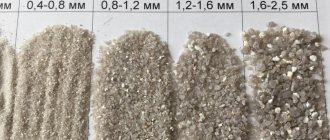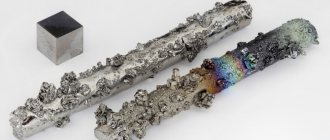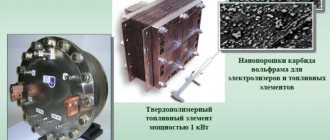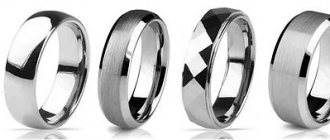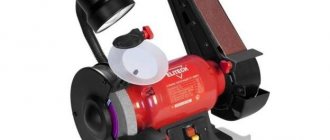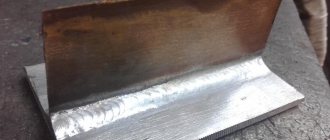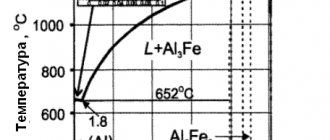Physical properties of Molybdenum.
Molybdenum crystallizes in a cubic body-centered lattice with a period a = 3.14 Å. Atomic radius 1.4A, ionic radii Mo4+ 0.68A, Mo6+ 0.62A. Density 10.2 g/cm3 (20 °C); melting point 2620 °C; boiling point is about 4800 °C. Specific heat capacity at 20-100°C is 0.272 kJ/(kg K), that is, 0.065 cal/(g deg). Thermal conductivity at 20°C is 146.65 W/(m K), that is, 0.35 cal/(cm sec deg). Thermal coefficient of linear expansion (5.8-6.2)·10-6 at 25-700 °C. The electrical resistivity is 5.2·10-8 ohm·m, that is, 5.2·10-6 ohm·cm; electron work function 4.37 eV. Molybdenum is paramagnetic; atomic magnetic susceptibility -90·10-6 (20 °C).
Mechanical properties of Molybdenum.
The mechanical properties of Molybdenum depend on the purity of the metal and its previous mechanical and thermal treatment. Thus, Brinell hardness is 1500-1600 Mn/m2, that is, 150-160 kgf/mm2 (for sintered rod), 2000-2300 Mn/m2 (for forged rod) and 1400-1850 Mn/m2 (for annealed wire); tensile strength for annealed wire is 800-1200 MN/m2. Elastic modulus Molybdenum 285-300 H/m2. Mo is more ductile than W. Recrystallizing annealing does not lead to brittleness of the metal.
Chemical properties of Molybdenum.
Molybdenum is stable in air at ordinary temperatures. The onset of oxidation (tarnish color) is observed at 400 °C. Starting at 600 °C, the metal quickly oxidizes to form MoO3. Water vapor at temperatures above 700 °C intensively oxidizes Molybdenum to MoO2. Molybdenum does not react chemically with hydrogen until it melts. Fluorine acts on Molybdenum at ordinary temperatures, chlorine at 250 ° C, forming MoF6 and MoCl6. When exposed to sulfur and hydrogen sulfide vapors above 440 and 800 °C, respectively, disulfide MoS2 is formed. With nitrogen, Molybdenum forms a nitride (probably Mo2N) above 1500 °C. Solid carbon and hydrocarbons, as well as carbon monoxide (II) at 1100-1200 °C interact with the metal to form Mo2C carbide (melts with decomposition at 2400 °C). Above 1200 °C, molybdenum reacts with silicon, forming silicide MoSi2, which is highly stable in air up to 1500-1600 °C (its microhardness is 14,100 Mn/m2). Molybdenum is somewhat soluble in hydrochloric and sulfuric acids only at 80-100 °C. Nitric acid, aqua regia and hydrogen peroxide slowly dissolve the metal in the cold, quickly when heated. A good solvent for Molybdenum is a mixture of nitric and sulfuric acids. Tungsten does not dissolve in a mixture of these acids. Molybdenum is stable in cold alkali solutions, but somewhat corrodes when heated. The configuration of the outer electrons of the Mo atom is 4d55s1, the most characteristic valence is 6. Compounds of 5-, 4-, 3- and 2-valent Molybdenum are also known. Molybdenum forms two stable oxides - MoO3 (white crystals with a greenish tint, melting point 795 °C, boiling point 1155 °C) and MoO2 (dark brown). In addition, intermediate oxides are known that correspond in composition to the homologous series MonO3n-1 (Mo9O26, Mo8O23, Mo4O11); all of them are thermally unstable and decompose above 700 °C to form MoO3 and MoO2. MoO3 oxide forms simple (or normal) Molybdenum acids - monohydrate H2MoO4, dihydrate H2MoO4·H2O and isopolyacids - H6Mo7O24, HMo6O24, H4Mo8O26 and others. Salts of normal acids are called normal molybdates, and salts of polyacids are called polymolybdates. In addition to those mentioned above, several molybdenum peracids are known - H2MoOX (x - from 5 to and complex heteropolycompounds with phosphoric, arsenic and boric acids. One of the common salts of heteropolyacids is ammonium phosphoromolybdate (NH4)3[P(Mo3O10)4] 6H2O. From Molybdenum halides and oxyhalides are most important fluoride MoF6 (melt 17.5 °C, boiling point 35 °C) and chloride MoCl5 (melt 194 °C, boiling point 268 °C). They can be easily purified by distillation and are used to obtain high-purity Molybdenum The existence of three Molybdenum sulfides has been reliably established - MoS3, MoS2 and Mo2S3. The first two are of practical importance. MoS2 disulfide occurs in nature in the form of the mineral molybdenite; it can be obtained by the action of sulfur on Molybdenum or by fusing MoO3 with soda and sulfur. The disulfide is practically insoluble in water, HCl, diluted H2SO4. Decomposes above 1200 ° C to form Mo2S3. When hydrogen sulfide is passed into heated acidified solutions of molybdates, MoS3 is deposited.
Molybdenum deposits
The beginning of the extraction of molybdenum ores is considered to be the second half of the 19th century. However, for quite a long time, right up to the First World War, industrial metal mining was carried out only in the territory of some countries (Australia and Norway). It was mined in relatively small quantities, which did not exceed several tens of tons. In the 1920s, 800 tons of molybdenum were produced worldwide.
Molybdenum deposits are also divided according to genetic types, of which there are only two: hydrothermal and skarn.
It is worth saying that in developed countries, when developing deposits, preference is given to stockwork molybdenum and porphyry copper deposits. The first of them are characterized by large plutons of moderately acidic granitoids, with stocks and dikes of porphyry rocks. The formation of deposits occurs in several stages under the influence of hydrothermal conditions. Tectonic faults play a huge role in the formation of deposits.
Today, molybdenum deposits are being developed in many parts of the world.
The largest deposits are famous in countries such as the USA, Mexico, Chile, Canada, Australia, Norway, and Russia. Armenia owns molybdenum deposits exceeding 7% of all world reserves. It is worth noting that the Kajaran copper-molybdenum deposit stores about 90% of them in its depths. Table 2. Molybdenum deposits by country
| A country | Deposit yew. tn |
| USA | 2700 |
| China | 3000 |
| Chile | 1905 |
| Peru | 850 |
| Canada | 95 |
| Russia | 360 |
| Mexico | 135 |
| Armenia | 635 |
| Iran | 120 |
| Mongolia | 294 |
| Uzbekistan | 203 |
| Bulgaria | 10 |
| Kazakhstan | 130 |
| Kyrgyzstan | 100 |
| Others | 1002 |
Obtaining Molybdenum.
The main raw materials for the production of Molybdenum, its alloys and compounds are standard molybdenite concentrates containing 47-50% Mo, 28-32% S, 1-9% SiO2 and impurities of other elements. The concentrate is subjected to oxidative roasting at 570-600 °C in multi-hearth furnaces or fluidized bed furnaces. The roasting product, the cinder, contains MoO3 contaminated with impurities. Pure MoO3, necessary for the production of metallic Molybdenum, is obtained from cinder in two ways: 1) sublimation at 950-1100 °C; 2) by a chemical method, which consists of the following: the cinder is leached with ammonia water, transferring Molybdenum into solution; ammonium polymolybdates (mainly paramolybdate 3(NH4)2O 7MoO3 nH2O) are isolated from a solution of ammonium molybdate (after purifying it from impurities of Cu and Fe) by neutralization or evaporation followed by crystallization; By calcining paramolybdate at 450-500 °C, pure MoO3 is obtained, containing no more than 0.05% impurities. Metallic Molybdenum is obtained (first in powder form) by the reduction of MoO3 in a stream of dry hydrogen. The process is carried out in tube furnaces in two stages: the first - at 550-700 °C, the second - at 900-1000 °C. Molybdenum powder is converted into a compact metal by powder metallurgy or smelting. In the first case, relatively small workpieces are obtained (cross-section 2-9 cm2 and length 450-600 mm). Molybdenum powder is pressed in steel molds under a pressure of 200-300 Mn/m2 (2000-3000 kgf/cm2). After preliminary sintering (at 1000-1200 °C) in a hydrogen atmosphere, the workpieces (stubs) are subjected to high-temperature sintering at 2200-2400 °C. The sintered rod is processed by pressure (forging, broaching, rolling). Larger sintered billets (100-200 kg) are obtained by hydrostatic pressing in elastic shells. Billets of 500-2000 kg are produced by arc melting in furnaces with a cooled copper crucible and a consumable electrode, which is a package of sintered rods. In addition, electron beam melting of Molybdenum is used. To produce ferromolybdenum (alloy; 55-70% Mo, the rest Fe), which is used to introduce Molybdenum additives into steel, the reduction of calcined molybdenite concentrate (cinder) with ferrosilicon in the presence of iron ore and steel filings is used. Application of Molybdenum. 70-80% of the mined Molybdenum is used for the production of alloy steels. The rest is used in the form of pure metal and alloys based on it, alloys with non-ferrous and rare metals, as well as in the form of chemical compounds. Metallic Molybdenum is the most important structural material in the production of electric lighting lamps and electric vacuum devices (radio lamps, generator lamps, X-ray tubes and others); Molybdenum is used to make anodes, grids, cathodes, and filament holders in electric lamps. Molybdenum wire and strip are widely used as heaters for high temperature furnaces. After mastering the production of large billets, molybdenum began to be used (in its pure form or with alloying additives of other metals) in cases where it is necessary to maintain strength at high temperatures, for example, for the manufacture of parts for rockets and other aircraft. To protect Molybdenum from oxidation at high temperatures, parts are coated with Molybdenum silicide, heat-resistant enamels, and other protection methods. Molybdenum is used as a structural material in nuclear power reactors, since it has a relatively small thermal neutron capture cross section (2.6 barn). Molybdenum plays an important role in heat-resistant and acid-resistant alloys, where it is combined mainly with Ni, Co and Cr. Some molybdenum compounds are used in technology. Thus, MoS2 is a lubricant for rubbing parts of mechanisms; Molybdenum disilicide is used in the manufacture of heaters for high-temperature furnaces; Na2MoO4 - in the production of paints and varnishes; Molybdenum oxides are catalysts in the chemical and oil industries.
New technologies
Thanks to the full cycle production, we obtain refractory materials from ore, using powder metallurgy methods we transform them into chemical transition substances - powders. They are used in the space and automotive industries, household appliances and electronics. As a result of sintering or melting combined with pressing, metal powders are again converted into metals, both pure and represented by alloys. Based on this material, we carry out our own wire drawing (from tantalum, tungsten, niobium, molybdenum and hafnium). Products with cross sections from 0.05 to 3.5 mm are available to customers. We also form glazing beads (molybdenum, tungsten, rhenium, niobium, etc.) from metal powders using the sintering method. Depending on the need, they are used independently or turned into foil and tape, rods and wire. The most delicate metal products are thin threads made of nickel 0.025 microns, tungsten and molybdenum, as well as threads made of tungsten-rhenium alloy VR-20, VR-27 and molybdenum-rhenium MR-47.
It is impossible to imagine any production without waste. But we were able to turn this disadvantage into an advantage. We re-melt the unused particles into tungsten-nickel-copper and tungsten-nickel-iron - heavy alloys of various grades. They are indispensable for creating precision mechanisms with counterweights, centrifuges or balancers. Bushings and others were made from heavy alloys and were easy to process. We can produce the most complex and very precise elements according to customer dimensions.
One of the activities is our own production of ferroalloys: ferrovanadium, ferromolybdenum, ferroniobium, ferrotungsten.
A wide range of products includes electrodes and other equipment for welding, materials for erosion cutting, products for welding equipment: aluminum wire and rods, electrical holders, tips and grounding clamps, electrodes (including carbon and tungsten), modern plasmatrons for cutting.
Our main competitive advantages:
- modern technological base;
- the ability to carry out individual orders according to original drawings;
- constructively thinking specialists who are always ready to solve the most complex problems;
- provision of additional services.
We are ready to carry out the following types of work in a short time: forging, laser cutting, argon-arc welding, milling and turning work, metal rolling. We accept scrap of refractory and rare metals at prices favorable to our partners. Delivering quality products, we strictly monitor compliance with all technical conditions and monitor their compliance with technical specifications and GOST. All batches and product items are accompanied by the necessary certificates.
We also accept orders for re-tensioning of tungsten, molybdenum, tantalum, niobium, tungsten-rhenium grades VR-20 and VR-27, molybdenum-rhenium grade MP-47 wires from customer-supplied raw materials.
collapse...
Tungsten.
Tungsten
(Wolframium) W - element of group VI, 6th period of the periodic system of D.I. Mendeleev, p.n. 74, atomic mass 183.85. Opened in 1781 by K. Scheele. Tungsten is rare in nature. Forms its own minerals - wolframite and scheelite; found as an impurity in the minerals tin, molybdenum, titanium. Tungsten is a light gray metal that is chemically resistant under normal conditions. At elevated temperatures, it reacts with oxygen, carbon and other elements. It reacts with fluorine at 20° C, and with other halogens when heated. Acids, with the exception of hydrofluoric and nitric acids, have no effect on tungsten. In compounds it exhibits variable valency. The most stable compounds are hex-valent tungsten. Tungsten is used for alloying steels, for the manufacture of hard alloys for incandescent filaments of electric lamps, heaters in electric furnaces, electrodes for welding, cathodes of generator lamps, and high-voltage rectifiers.
Physical properties of Tungsten.
Tungsten crystallizes in a body-centered cubic lattice with a period a = 3.1647 Å; density 19.3 g/cm3, melting point 3410°C, boiling point 5900°C. Thermal conductivity (cal/cm·sec·°С) 0.31 (20°С); 0.26 (1300°C). Electrical resistivity (ohm cm 10-6) 5.5 (20°C); 90.4 (2700°C). Electron work function 7.21·10-19 J (4.55 eV), radiation energy power at high temperatures (W/cm2): 18.0 (1000°C); 64.0 (2200°C); 153.0 (2700°C); 255.0 (3030°C). The mechanical properties of Tungsten depend on previous processing. Tensile strength (kgf/mm2) for a sintered ingot 11, for pressure treated from 100 to 430; modulus of elasticity (kgf/mm1) 35000-38000 for wire and 39000-41000 for single-crystalline thread; Brinell hardness (kgf/mm2) for a sintered ingot 200-230, for a forged ingot 350-400 (1 kgf/mm2 = 10 MN/m2). At room temperature, tungsten is low-plastic.
Products from molybdenum and tungsten for the production of leucosapphire single crystals
for the production of leucosapphire single crystals
Bogolyubov N.V., Mikhin I.V., Rodionov V.V., Root E.A.
(JSC "POLEMA", Tula, Russia)
JSC POLEMA is a leading global manufacturer of products made from chromium, molybdenum, tungsten, metal powders and composite materials. The company has a powerful production and analytical base, installations for isostatic pressing, high-temperature sintering, extrusion, rolling mills, and a modern machine park, allowing the production of large-sized rolled products and products from refractory metals that have no analogues in Russia.
Deliveries of heat screens and crucibles made of refractory metals for thermal units of growth installations for manufacturers of sapphire single crystals in Russia and abroad began in 1998. As market demand grew, the company expanded the range and increased the production volumes of crucibles, large-sized rolled molybdenum and products from Mo70W30 alloy and tungsten. Currently, POLEMA has introduced additional capacity for the production of large-sized tungsten crucibles, allowing them to more than triple their output. The production of large-sized thin-sheet rolled products from molybdenum and thermal units according to customer drawings is also expanding.
Molybdenum products:
- powders;
- sheets;
- plates;
- disks;
- electrodes;
- rods;
- crucibles;
- bowls;
- screens, etc.
Sheets and plates are produced in the following brands:
- sheets of alloy grade M-MP GOST 17431-72;
- rolled high-precision molybdenum sheet TU14-22-149-2001.
Rolled products are produced with a thickness from 0.3 to 45 mm, characterized by high purity in terms of interstitial impurities and metallic impurities (Table 1), high ductility and uniformity of structure.
Molybdenum sheets are supplied in an annealed state to relieve internal stresses, unless other conditions are specified by the customer. Table 2 shows typical values of the strength characteristics of rolled sheets at room temperature.
Examples of mechanical properties of rolled molybdenum M-MP
Table 2
| Thickness, mm | Strength σв, kgf/mm2 | Relative elongation δ, % | Hardness, HB |
| 1,0-1,3 | 78-85 | 13-16 | 217-240 |
| 1,9-2,5 | 79-88 | 18-21 | 229-240 |
| 3,0-5,4 | 75-82 | 18-25 | 210-229 |
Rolled molybdenum sheets are mainly used for the manufacture of flat and round heat shields. When forming screens on a press brake, it is recommended to carry out short-term localized heating of the sheet using a gas-flame or induction heating method to temperatures depending on the thickness of the rolled product and the degree of deformation. For example, for a sheet with a thickness of 0.5 mm, the recommended heating range is >100-3000C, a sheet of 1 mm is >150-3500C, a sheet of 2 mm is >270-4700C.
Taking into account the development of equipment for growing single crystals, in the near future there will be a need for wide rolled sheets up to 700 mm. To ensure the production of this type of product, POLEMA OJSC plans to purchase a new 12- or 20-roll stand for rolling thin sheets up to 700 mm wide with minimal warpage in the period 2011-2012. At the same time, the issue of purchasing equipment for precise cutting of sheets using water (water jet) or laser cutting is being considered. Each option has its own advantages and disadvantages, and we would like to receive recommendations from consumers of molybdenum sheets: which cutting method is better in terms of tooling durability.
The introduction of such equipment into production will expand the range of rolled products, improve its quality and significantly reduce costs.
Taking into account the latest trends in replacing the screen lining of growth installations with thermal insulation made of baddeleyite ceramics. OJSC "POLEMA" is carrying out work to develop the production of shaped products from yttrium-stabilized zirconium oxide. Thus, soon all the contents of the heating unit of the installations will be available at one enterprise, which will have a positive impact on the logistics of production of the installations.
Molybdenum rods, electrodes.
Chemical composition. Modern methods of powder metallurgy provide a high degree of purity of molybdenum in terms of metallic and interstitial impurities (C, N, O, H), the microstructure necessary for use as a heat-resistant structural material in electrical engineering and other devices operating at high temperatures.
Due to the low content of interstitial impurities, metal impurities, as well as the fine-grained structure of the material, finished products are distinguished by excellent plastic characteristics.
The rods are manufactured in a heat-treated state, in an annealed state to relieve internal stresses, unless otherwise specified by the customer.
In the microstructure of rods with a diameter of up to 40 mm, a complete recrystallization structure is not allowed unless special requirements for recrystallization annealing or structure parameters are specified and agreed upon by the customer.
The rods are produced in ground, turned and descaled (without mechanical treatment) form, with a diameter from 3.18 to 80 mm or more.
Since 2005, POLEMA OJSC has been producing rolled sheets and rods from lanthanated molybdenum ML-MP, dispersion-strengthened with lanthanum oxide, so-called ODS - Mo. Lanthanum oxide introduced into the system and enveloping molybdenum grains serves as a barrier to the movement of dislocations during deformation, due to which the structure of the alloy is stabilized, strength and resistance to creep are ensured at high temperatures. This material has a low threshold of cold brittleness, high ductility in the recrystallized state, high, more than 1.6 times higher strength at 1600 °C and an order of magnitude higher resistance to deformation (creep) when tested for long-term strength at 1800 °C than unalloyed molybdenum. The material welds well.
For thermal units, the company also supplies products (crucibles, stands, feet) made of molybdenum-tungsten alloy MV30-MP. Strengthened as a result of the formation of a solid solution with tungsten, the MB30 alloy has, in comparison with molybdenum, an increased recrystallization temperature, strength and creep resistance at elevated temperatures.
Tungsten rolled products and crucibles.
Tungsten is characterized by maximum interatomic bond strength, the highest melting point among refractory metals (3420 °C), high density 19.3 g/cm3, high strength, thermal conductivity, hardness (HV30 >460), creep resistance and long-term strength. Compared to molybdenum, pure tungsten has a higher recrystallization temperature of 1350 °C, approximately 2-4 orders of magnitude lower vapor pressure and evaporation rate at temperatures of 1800-2500 °C, a lower coefficient of thermal expansion (4.2 10-6 at 20 °C) and low electrical resistance (0.05·10-6 Ohm·m) [1].
As noted in [2], improving the technique of growing sapphire single crystals of optical quality is associated with the use of design solutions for the preparation of equipment (crucible, screens) that ensure maximum purity of the process.
Modern methods of powder metallurgy provide a high degree of tungsten purity for metallic and interstitial impurities (C, N, O, H), a fine-grained structure necessary for use in thermal units and other devices operating at extremely high temperatures.
POLEMA produces sheet metal with a thickness of 0.5 to 45 mm and tungsten crucibles using very pure raw materials - tungsten powder of its own production with a typical W content of 99.98% and above. Sapphire crystals grown in a tungsten thermal unit are purer than, for example, in a plant with a tungsten-molybdenum crucible and molybdenum screens [3].
The shape and dimensions of the crucibles are coordinated with the wishes of customers. The roughness of the processed crucibles is Rz 6.3 microns, no more. Typical sizes of TV-MP crucibles used by Russian and foreign partners of POLEMA, mm: Ø200x240, Ø240x300, Ø250x350-400, Ø330x350, Ø330x450, Ø338x460.
In recent years, there has been a steady increase in crucible sizes.
Fig.1 Change in the maximum diameter of crucibles shipped according to orders from POLEMA consumers. 2012 - predicted crucible size.
In the near future we should expect demand for crucibles with a diameter of 400-420 mm with the prospect of further growth to 500 mm. Changing the size of crucibles in the future is an issue for discussion at the conference.
To meet the current and future needs of growth installations for large-diameter crucibles, it is planned to purchase and launch in 2012 a new hydrostatic press with improved characteristics. In addition, it is planned to re-equip the fleet of furnace and metal-cutting equipment involved in the production of crucibles.
During the operation of a tungsten crucible in a leucosapphire growing installation, the formation of surface defects on the internal and external walls of the crucible is revealed:
- deposition of molybdenum in separate zones on the outside, the source of which can be the molybdenum equipment of the installation;
- local zones of tungsten recrystallization on the internal surfaces of the crucible, which have burrs and microcracks.
The study of the structure and nature of the distribution of recrystallization zones and microcracks showed that the reasons for their occurrence could be local overheating of the crucible, the mechanical effect of the crystal on the walls of the crucible as it moves (Al2O3 inclusions were found in some scuffs), thermal stresses due to the high temperature gradient along the height of the crucible .
Figures 2-4 show characteristic defects observed on the walls of a spent W crucible. The studies were carried out at POLEMA using a JSM-3690 electron microscope with a QUANTAX X-ray attachment.
| Fig.2 (top left). The deposited layer of Mo on the outside of the crucible. | Fig.3 (top right). Incorporation of Al2O3 on the inside of the crucible. |
| Fig.4 (bottom). Crack. | |
In light of these studies, the task of improving the growth process of sapphire crystals to reduce damage to the surface of crucibles during operation is urgent. The number of defects (damage) to the surface of crucibles detected during long-term operation varies significantly at different enterprises. In this regard, domestic enterprises are characterized on the positive side.
The development of production of products made of refractory metals for thermal units of sapphire single crystal growing plants is a priority direction at POLEMA JSC. The company is expanding cooperation in this area with domestic and foreign companies in terms of supplying equipment elements and sets of thermal units, improving the design of equipment and conducting structural studies.
Bibliography:
- EAT. Savitsky, G.S. Burkhanov. Metallurgy of refractory metals and alloys. Nauka, M, 1967.
- Eskov E.V., Ignatov A.Yu., Postolov V.S., Filimonov A.S.. Optical sapphire, technical requirements and crystal growing technology. North Caucasus State Technical University., Proceedings of the conference Solid State Chemistry, 2006.
- DI. Bletskan, V.Ya. Bratus, A.R. Lukyanchuk, V.T. Maslyuk, O.A. Parlag. Uzhgorod National University, JSC "Technocrystal", Institute of Semiconductor Physics of the National Academy of Sciences, Institute of Electronic Physics of the National Academy of Sciences, Ukraine. Letters to ZhTF, 2008, volume 34, issue 14.
" Back
Top
Print page
Chemical properties of Tungsten.
Under normal conditions, tungsten is chemically resistant. At 400-500°C, the compact metal noticeably oxidizes in air to WO3. Water vapor intensively oxidizes it above 600°C to WO3. Halogens, sulfur, carbon, silicon, boron interact with tungsten at high temperatures (fluorine with powdered tungsten - at room temperature). Tungsten does not react with hydrogen up to the melting point; with nitrogen above 1500°C forms nitride. Under normal conditions, Tungsten is resistant to hydrochloric, sulfuric, nitric and hydrofluoric acids, as well as aqua regia; at 100°C weakly interacts with them; quickly dissolves in a mixture of hydrofluoric and nitric acids. In alkali solutions when heated, tungsten dissolves slightly, and in molten alkalis with access of air or in the presence of oxidizing agents it dissolves quickly; in this case tungstates are formed. In compounds, tungsten exhibits a valence of 2 to 6; compounds with higher valence are the most stable. Tungsten forms four oxides: the highest - WO3 (tungsten anhydride), the lowest - WO2 and two intermediate ones W10O29 and W4O11. Tungsten anhydride is a lemon-yellow crystalline powder that dissolves in alkali solutions to form tungstates. When it is reduced with hydrogen, lower oxides and tungsten are successively formed. Tungstic anhydride corresponds to tungstic acid H2WO4 - a yellow powder, practically insoluble in water and acids. When it interacts with solutions of alkalis and ammonia, solutions of tungstates are formed. At 188°C, H2WO4 splits off water to form WO3. With chlorine, tungsten forms a number of chlorides and oxychlorides. The most important of them: WCl6 (mp 275°C, bp 348°C) and WO2Cl2 (mp 266°C, sublimates above 300°C), are obtained by the action of chlorine on tungsten anhydride in the presence of coal. With sulfur, tungsten forms two sulfides WS2 and WS3. Tungsten carbides WC (melt 2900°C) and W2C (melt 2750°C) are hard, refractory compounds; are obtained by the interaction of Tungsten with carbon at 1000-1500°C.
Metals of group VI of the secondary subgroup (Cr, Mo, W)
All three metals of the secondary subgroup of group VI - chromium, molybdenum and tungsten - were discovered one after another at the end of the 18th century.
Chrome (Chromium)
It was discovered in 1766 in the mineral crocoite PbCrO4 by the Russian mineralogist I. G. Leman. The metal was first isolated in its free form in 1797 by the French chemist Louis Nicolas Vauquelin.
Chromium
Chrome is a silver-white metal, hard and refractory (tmelt = 1890°C). At room temperature it does not oxidize in air. The metal ingot is resistant to oxidation even at elevated temperatures, while chromium powder burns in air already at 300 °C, forming green chromium (III) oxide Cr2O3 . Dilute sulfuric and hydrochloric acids dissolve chromium, releasing hydrogen. Chromium is insoluble in cold concentrated nitric acid and is passivated after treatment with it.
Chromium is a fairly common element. The earth's crust contains approximately the same amount as chlorine and vanadium - 0.02%. chromium iron ore predominates . When it is reduced with coal, ferrochrome is formed - an alloy of chromium with iron: FeCr2O4 + 4C = Fe + 2Cr + 4CO. To obtain pure metal, chromium iron ore is purified from iron, transferring chromium to the highest oxidation state (+6), and only then it is reduced with aluminum.
Ferrochromium (containing about 60% chromium) and pure chromium are used as additives to steels: the resulting alloy - chromium steel - is highly hard and resistant to oxidation. The most popular grade of stainless steel contains 18% chromium and 6% nickel. This steel is used in the chemical and petrochemical industries, as well as for the manufacture of household appliances. Alloys of chromium and nickel - nichrome - are not only resistant to corrosion, but also have high electrical resistance. They are used to make incandescent coils for electric heating devices. Many products are coated with a thin layer of chrome - chrome plated. The chrome coating gives the product a beautiful appearance and protects it from corrosion.
Chromium(III) chloride
The name “chrome” (from the Greek “chrome” - “color”, “paint”), proposed by Vauquelin, emphasizes the variety of colors of the salts of this metal. Thus, in aqueous solutions, chromium (II) compounds have a sky blue color, chromium (III) - violet or green, chromium (VI) - orange or yellow.
When oxidized in non-oxidizing acids, such as hydrochloric acid, chromium goes into the +2 oxidation state:
Cr + 2HCl = CrCl2 + H2↑
But the resulting light blue solution is stable only in the absence of oxygen. In air it instantly turns green as chromium oxidizes:
4CrCl2 + 4HCl + O2 = 4CrCl3 + 2H2O
If II ) compounds exhibit basic properties, then trivalent chromium compounds are amphoteric. III ) hydroxide Cr ( OH )3 , precipitated from a solution of chromium salt under the action of ammonia:
CrCl3 + 3NH3∙H2O = Cr(OH)3↓ + 3NH4Cl,
is an amphoteric base. When it is dissolved in acids, chromium (III) salts are formed:
2Cr(OH)3 + 3H2SO4 = Cr2(SO4)3 + 6H2O,
and in caustic alkalis - hydroxochromates (III) of alkali metals (they are also called chromites):
Cr(OH)3 + 3NaOH = Na3[Cr(OH)6].
Potassium chromate
In an acidic environment, chromium compounds ( III ) are quite resistant to oxidation, but in the presence of alkali they are easily oxidized to chromates:
2Na3[Cr(OH)6] + 4NaOH + 3Br2 = 2Na2CrO4 + 6NaBr + 8H2O.
Chromates are yellow salts, derivatives of chromic acid H2CrO4, which is stable only in very dilute solutions. Alkali metal chromates are highly soluble in water. In an acidic environment they turn into orange dichromates - salts of dichromic acid H2Cr2O7:
2Na2CrO4 + H2SO4 = Na2SO4 + Na2Cr2O7 + H2O
When alkalized, the dichromate turns back into chromate:
Na2Cr2O7 + 2NaOH = 2Na2CrO4 + H2O, and the solution turns yellow again.
In an acidic environment, dichromates are strong oxidizing agents. The products of their reduction are Cr3+ ions:
K2Cr2O7 + 4H2SO4 + 3K2SO3 = Cr2(SO4)3 + 4K2SO4 + 4H2O
At a low temperature, it is possible to isolate violet crystals of potassium chromium alum KCr(SO4)2∙12H2O .
The dark red solution obtained by adding concentrated sulfuric acid to a saturated aqueous solution of potassium dichromate is called " chrompic ". In laboratories it is used for washing and degreasing chemical glassware. The dishes are carefully rinsed with chromium, which is not poured into the sink, but is used repeatedly until the mixture turns green - all the chromium in such a solution has already converted into the Cr3+ form.
Potassium dichromate
A particularly strong oxidizing agent is chromium ( VI ) CrO 3 . With its help, you can light an alcohol lamp without matches: just touch the wick moistened with alcohol with a stick containing several crystals of this substance.
By decomposing CrO3, dark brown chromium(IV) oxide powder CrO2 can be obtained. It has ferromagnetic properties and was formerly used in the magnetic tapes of some audio cassettes.
The adult human body contains only about 6 mg of chromium. Many compounds of this element (especially chromates and dichromates) are toxic, and some of them are carcinogenic.
Molybdenum (Molybdaenum) and tungsten (Wolframium)
Black crystals of molybdenum disulfide MoS2 with a metallic sheen were known to people in ancient times. This substance was often confused with graphite or PbS galena. The name of the mineral “molybdenite” emphasized the similarity of its mechanical properties with the properties of lead (translated from Greek “molybdos” means “lead”): it could be used for writing on parchment. In 1778 K.V. Scheele proved that molybdenite does not contain lead and isolated the oxide of a new element from it. A few years later, the Swedish chemist P. Hjelm, calcining this oxide with coal, obtained the metal. Based on the mineral it contains, the new element began to be called molybdenum.
Molybdenum coin
Around the same time, in 1781, Scheele isolated another metal oxide from the mineral tungsten (its current name is scheelite CaWO4). Two years later, Spanish chemists brothers Fausto and Julio de Elujar obtained it in the form of a simple substance by calcining another mineral with coal - wolframite (Fe, Mn)WO4. It is interesting that in some languages, for example in English, the name tungsten is assigned to the element. And the word “tungsten” is derived from the German words “Wolf” and “Rahm” and literally translates as “wolf foam”. This is how some tungsten minerals were called in the Middle Ages, which interfered with the smelting of tin. They converted the metal into slag in the form of tin tungstates - “they devoured the tin like a wolf devouring a sheep,” as stated in one of the medieval treatises on metallurgy.
Molybdenum (tmelt = 2615оС) and tungsten (tmelt = 3410оС) are among the most refractory substances. The high hardness inherent in these metals, combined with heat resistance, makes them indispensable in the production of high-temperature structural materials. It is not without reason that tungsten is used to make the filaments of electric lamps (the filament heats up above 2500°C) and the cathodes of X-ray tubes, and the alloy of molybdenum and titanium can be used at temperatures up to 1500°C. Alloys based on tungsten carbide WC are particularly hard. They are used to make cutting parts of tools and drills.
Molybdenum and tungsten are much less chemically active than chromium. Acids and alkalis have practically no effect on them. The exception is hot fuming nitric acid, which slowly oxidizes metals to the highest oxidation state (+6):
W + 6HNO3 = H2WO4↓ + 6NO2 + 2H2O
The resulting precipitates of H2MoO4 and H2WO4 are called molybdic and tungstic acids, respectively, since under the action of alkalis they give salts - molybdates (for example, Na2MoO4) and tungstates (Na2WO4).
Tungsten
When molybdic and tungstic acids are heated, the corresponding higher oxides are formed - MoO3 and WO3. By reducing them with hydrogen at 1100°C, metal powders are obtained: WO3 + 3H2 = W + 3H2O.
Converting such a powder into an ingot is not an easy task, because both metals are extremely refractory. To do this, the metal powder is mixed with a solution of glycerin in alcohol and small pieces are pressed from the resulting mass. Then they are heated to a high temperature (the glycerin burns out) and an electric current is passed through them. Under the influence of the released heat, individual microcrystals are fused with each other, forming a compact ingot.
Download:
Download a free abstract on the topic: “Chrome” Chrome.doc (236 Downloads)
Download for free an abstract on the topic: “Study of the properties of chromium and its compounds” STUDY-PROPERTIES-of-CHROME-AND-ITS-COMFOUNDS.docx (249 Downloads)
Download free essay on the topic: “Molybdenum” Molybdenum.docx (229 Downloads)
You can download abstracts on other topics here
*in the image of the record the mineral is crocoite
Similar
Obtaining Tungsten.
The raw materials for the production of Tungsten are wolframite and scheelite concentrates (50-60% WO3). Ferrotungsten (an alloy of iron with 65-80% tungsten), used in steel production, is directly smelted from the concentrates; To obtain tungsten, its alloys and compounds, tungsten anhydride is isolated from the concentrate. Several methods for producing WO3 are used in industry. Scheelite concentrates are decomposed in autoclaves with a soda solution at 180-200°C (a technical solution of sodium tungstate is obtained) or hydrochloric acid (a technical tungstic acid is obtained): 1. CaWO4 solid + Na2CO3 l = Na2WO4 l + CaCO3 solid 2. CaWO4 solid + 2HCl = H2WO4 solids + CaCl2 solution. Wolframite concentrates are decomposed either by sintering with soda at 800-900°C, followed by leaching of Na2WO4 with water, or by heating with sodium hydroxide solution. When decomposed by alkaline agents (soda or sodium hydroxide), a Na2WO4 solution contaminated with impurities is formed. After their separation, H2WO4 is separated from the solution. To obtain coarser, easily filtered and washed sediments, CaWO4 is first precipitated from a solution of Na2WO4, which is then decomposed with hydrochloric acid.) Dried H2WO4 contains 0.2 - 0.3% impurities. By calcining H2WO4 at 700-800°C, WO3 is obtained, and from it hard alloys are obtained. To produce metal Tungsten, H2WO4 is additionally purified using the ammonia method - dissolution in ammonia and crystallization of ammonium paratungstate 5(NH4)2O 12WO3 nH2O. Calcination of this salt produces pure WO3. Tungsten powder is obtained by reducing WO3 with hydrogen (and in the production of hard alloys, also with carbon) in tubular electric furnaces at 700-850°C. Compact metal is produced from powder using the metal-ceramic method, that is, pressing in steel molds under a pressure of 3000-5000 kgf/cm2 and heat treatment of pressed blanks - bars. The last stage of heat treatment—heating to approximately 3000°C—is carried out in special apparatus by directly passing an electric current through a rod in a hydrogen atmosphere. The result is Tungsten, which can be easily processed by pressure (forging, drawing, rolling, etc.) when heated. Tungsten single crystals are obtained from the rods using crucibleless electron beam zone melting.
Application of Tungsten.
Tungsten is widely used in modern technology in the form of pure metal and in a number of alloys, the most important of which are alloy steels, hard alloys based on tungsten carbide, wear-resistant and heat-resistant alloys. Tungsten is part of a number of wear-resistant alloys used to coat the surfaces of machine parts (aircraft engine valves, turbine blades, and others). In aviation and rocket technology, heat-resistant tungsten alloys with other refractory metals are used. Refractoriness and low vapor pressure at high temperatures make tungsten indispensable for electric lamp filaments, as well as for the manufacture of parts for electric vacuum devices in radio electronics and x-ray engineering. In various fields of technology, some chemical compounds of Tungsten are used, for example Na2WO4 (in the paint and varnish and textile industries), WS2 (a catalyst in organic synthesis, an effective solid lubricant for friction parts).
How it works
The principle of operation of molybdenum additives can be briefly described as follows.
- During a scheduled oil change, the required amount of additive must be poured into the crankcase compartment. Each motor and fluid modification will require its own proportions. The dosage should be found in the manufacturer's instructions.
- While the engine is running, a chemical reaction occurs and the additive components are mixed with the oil. Next, a connection is formed that protects the surfaces of the parts from direct contact. This increases their service life.
An important parameter is that additives only work if they are used continuously. Therefore, every time you change the oil, you need to fill in a new bottle of fluid. Otherwise, all the positive effect will come to naught. The driver will also be required to strictly adhere to the rules for using additives. If the technology is broken, there may not be a positive effect.
Market specialists and experienced drivers advise paying attention to the manufacturer and customer reviews when selecting additives. You can often find counterfeits or low-quality products on store shelves.

